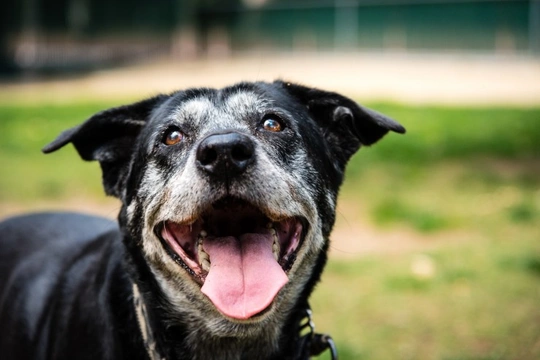
How to reduce the risk of joint injuries and diseases in mature and elderly dogs
We all hope that our dogs will live to a ripe old age in good health and that they will still be enjoying everyday activities like playing and going for walks well into their senior years, and keeping an older dog fit and active as they get older can actually help to improve their general health, as well as helping them to maintain their mobility.
However, in order to give your mature or elderly dog all of the benefits of exercise when they get older, you should pay some mind to the special care requirements of older dogs, and learn about how to exercise them safely and comfortably as they age.
Senior and elderly dogs tend to be more prone to suffering from joint injuries as they get older and their bodies are beginning to feel the effects of age, and chronic joint conditions such as arthritis are common in older dogs too.
You can’t always prevent the onset of an age-related joint condition in an older dog, nor can you ever guarantee that they won’t take a knock or develop an injury when exercising, but there are a few things that you can do to reduce the risk of joint injuries and diseases in elderly and mature dogs.
In this article we will tell you how to ensure that you do everything you can to keep your pooch active whilst reducing the risk of joint problems in your senior dog. Read on to learn more.
Always warm up before exertion
You should always warm up your dog (regardless of their age) before they start exerting themselves with strenuous exercise, and this is especially important for older dogs. Walk your dog at a pace that suits them for at least ten minute or so before they really start running around or playing in earnest, and bear in mind you might need to increase the warm up time in cold weather or if your dog is a little slower to get going.
Cooling down at the end of exercise is important too, with a gentle walk back home.
Encourage low-impact exercise
Exercise is very good for dogs and can help to keep them supple and mobile well into old age, but as your dog gets older, the type of exercise that is a good fit for them is apt to change.
Older dogs often enjoy leaping about and jumping to catch a ball or play and this is totally fine if your dog wants to do it and they can do so comfortably, but the risk of joint injuries from high-impact activity is higher in older dogs than it is for their younger counterparts.
Try to concentrate on providing low-impact exercise opportunities for your dog, and discourage high-impact jumps on hard ground. You might also want to think about taking your dog along to a canine swimming pool for hydrotherapy, which provides a very low-impact full body workout for your dog.
Feed your dog the right food for their life stage and activity levels
Your older dog needs a special type of nutrition that is designed to provide energy and support a healthy old age, so ensure that their diet is appropriate for them and that they are not being over fed. You may need to change your dog’s diet as they age, and you might also want to talk to your vet about the benefits of introducing joint supplements into their diet too.
Keep their weight under control
If your dog is overweight, this places more strain on their bones and joints, which increases the risk of injuries or the onset of age-related joint conditions like arthritis. Ensure that your older dog isn’t putting on weight as they become less active or because they’re being fed too much, and you will be able to keep your dog fit and active for longer, without increasing the risk of injuries.
Use coats and boots in bad weather if needed
Older dogs tend to feel the cold more than youngsters, and cold weather can mean that your dog takes longer to warm up, and finds it harder to maintain a warm enough temperature.
This might mean that you should consider using a warm coat and even maybe booties for your dog when walking in bad weather, even if they did not need these things when they were younger.
Schedule regular health checks with your vet
All dogs should have an annual health check with their vet, but if your dog is older you might want to think about arranging a six-monthly health check instead, just to make sure that everything is fine and to ask your vet any questions you might have.
Your vet can help to spot problems in the making before they become apparent to you, and they can advise you on the best way to walk and exercise your dog in old age.
Keep an eye out for the signs of problems in the making
If your dog appears to be favouring one leg slightly, if they suddenly lose interest in exercise or if they appear to be getting progressively stiffer in the mornings, this might be an indication of a problem in the making that may worsen over time, but that can be eased with the right care and treatments.
If you spot anything amiss, stop the exercise and contact your vet to book a check up to make sure that your dog is ok, and to get advice on how to care for their joints and manage any potential problems that may be developing.



